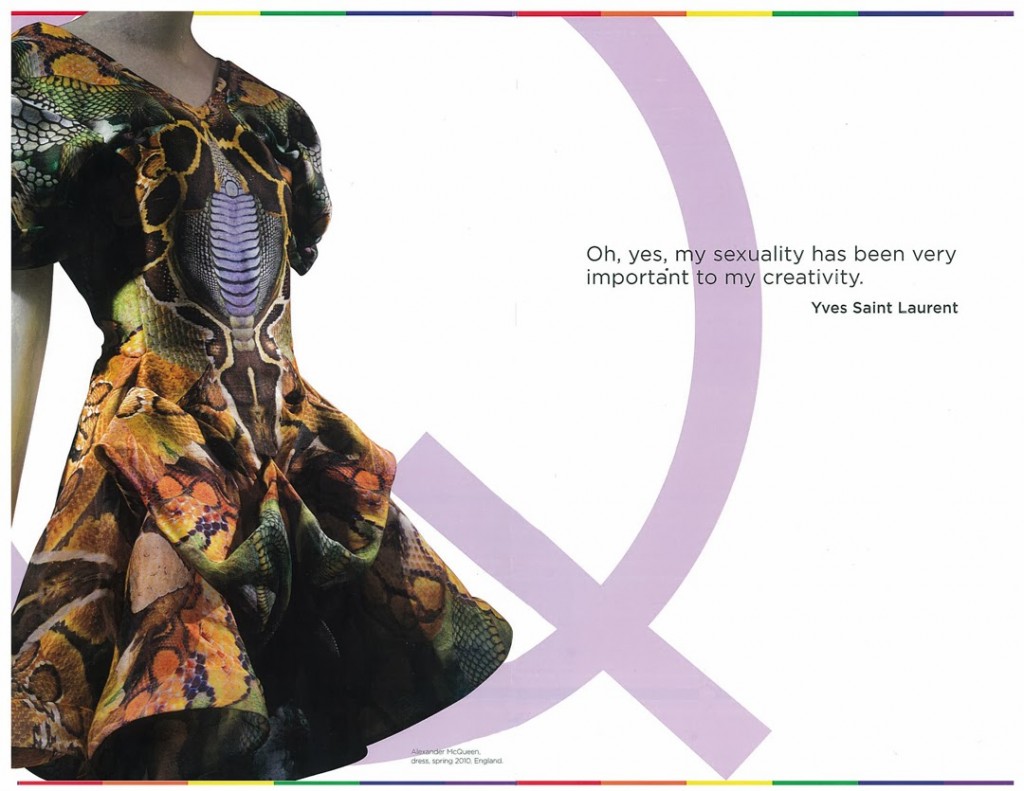Here’s a secret of mine. Sometimes I fear of that I will learn the fashion industry so intimately that I will fall out of love. Fashion and I were introduced early in high school and much like a first crush; it became impossible to ignore her beauty, confidence and freedom. Enthralled, I had to learn more. That’s how I ended up here at FIT, learning the past, present and future of my first love. While really learning her character I have found out some unsavory details I wish I could ignore. A character flaw here or there (popularity of sweatshops ion industry, the encouragement of unrealistic standards of beauty, etc.) and I find myself questioning this relationship we’ve built. As much as I am fashion and art oriented, I am just people and culture oriented. Sometimes, these unpalatable details gnaw at my conscious and do instill moments of uncertainty. Occasionally, I find myself wondering if I should be doing something “more important.” (I know, I know, it’s quite a terrible thought, being a fashion student and all.)
Then I go to the “Queer History of Fashion: From the Closet to the Catwalk” exhibit and all those insecurities vanish. As I stroll through the exhibit, taking in every outrageous outfit and devour every outrageous fact and I am reminded why I am here at FIT. Fashion transforms societies, providing a liberation that cannot be found anywhere else. The beautiful garments were paired with plaques describing, in detail, the designer, who it was worn by and the historical significance.There were garments designed by Christian Dior, Andre Leon,Jean Paul Gaultier, and pieces worn by Oscar Wilde, Namoi Campbell,etc. This short list not do justice for the impeccable and diverse collection. They had queer political gear, garments from the leather world, and plenty of other garments that shook the status-quo and shocked the world.
In r
Fashion, by far, is one of the most inclusive and accepting industries that queer people can work in. Fashion has allowed the oppressed to find liberation and build communities through shared struggles. It allowed people to be themselves. And that’s what fashion is all about, reveling in our differences and being celebrated for them. No matter what fast fashion says, it is an industry based on individuality, and this exhibit made me proud to work in such an industry.
And this is exactly how relationships should be. One learns to appreciate the person ( or industry) for all of their amazing attributes, acknowledge their flaws, and love them, not in spite of, but because of them. Luckily for us, we have the ability to help nurture, grow and change our lover.
If you live in or near NYC, I certainly encourage you all to check out this exhibit as well as the other exhibits in the FIT museum. ( I have attached the link at the bottom of this post.) We are lucky enough to have one of the best fashion design museums in the world and has won several awards for the various exhibits. It’s quite a gem, but don’t believe me, go check it out for yourself.
The link to the FIT museum (http://www.fitnyc.edu/332.asp)
All things Color, Love & Fashion,
Ayanna L.


